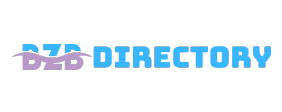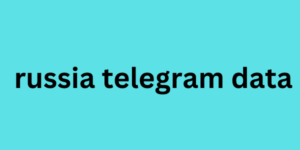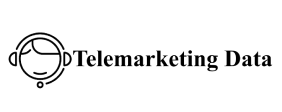GoDaddy Email Marketing vs Mailchimp
At first glance, Mailchimp and GoDaddy Email Marketing seem pretty similar Marketing vs Mailchimp as they are both complete marketing platforms. But the truth is, neither is truly the best at email marketing. Both lack features like in-depth reporting insights, advanced automation, and testing capabilities that experienced marketers expect.
A marketing platform that integrates
With your website builder may seem like it will save you time and money. However, every time I test an all-in-one marketing suite, I find that it can’t compete with the high-end features that a dedicated email marketing platform typically provides. I compared GoDaddy Email Marketing and Mailchimp to see if one can outperform the other or if both can outperform a dedicated email marketing service.
GoDaddy is better in some ways and Mailchimp is better in others russia telegram data but ultimately I’ve found both to have some major drawbacks and I’d rather have an alternative. Instead I’d recommend trying a service like Sendinblue because they have a full-featured free plan .
Features
The two platforms have a long list of features, including a native website builder and subscription forms. But when it comes to the number of email marketing features offered, Mailchimp ranks higher thanks to its visual automation builder and numerous app integrations.
Email Templates
Neither Mailchimp nor GoDaddy give you much in the way of email templates. GoDaddy has much fewer designs overall, but Mailchimp’s designs are incredibly dated. With either platform, you’ll need some design skills to create something workable.
GoDaddy has the fewest pre-made templates I’ve come across. There are only three (!) GoDaddy Email Marketing templates – they’re improvable at best. It’s nice that we can choose the “style” of any layout, which essentially changes the color scheme. However, I’d prefer to have better template designs to start with.
These are just your GoDaddy Email Marketing template options
Mailchimp has around 85 ready-made templates to choose from, and I like that it breaks the layouts down into categories to make searching a little easier. Still, browsing through Mailchimp’s templates confirms that none of the designs are particularly interesting — and many are so old that they’re essentially unusable.
Since GoDaddy and Mailchimp have so few workable templates, it’s safe to assume that your emails will look just like all the other brands that come with both platforms. If you want your email campaigns to stand out and look unique, I recommend using a service that has a lot more options. Benchmark, for example, has over 500 email templates — and while some need tweaking, you can still choose from hundreds of beautifully designed layouts.
Many of Mailchimp’s templates could use a major makeover
Both platforms let you design your own layout from scratch, but you’ll need plenty of time and patience to fiddle with the template editors (see below).
Marketing Automation
Mailchimp and GoDaddy both have automation, but Godaddy only allows a single use. Mailchimp is the winner here, but if you really want to automate your marketing, you can do much better. Of all the email marketing services I’ve tested , ActiveCampaign is the most impressive when it comes to automation . It has over 250 automation templates and dozens of integrations, saving you time and effort.
First, the good news: GoDaddy Email Marketing lets you create multi-step autoresponders so you can connect with subscribers over a period of weeks or months. Now for the bad news: The only automation trigger GoDaddy supports is a new subscriber signup. As our GoDaddy Email Marketing review explains, the workflow feature is so basic that you can’t create autoresponders for engaged subscribers, ecommerce customers, or other behavior-based groups.
GoDaddy’s marketing automation is limited at best
Mailchimp’s automated workflows are much more sophisticated. You can choose from about a dozen triggers and add multiple custom steps. Mailchimp offers a handful of behavioral triggers, so you can target subscribers who purchase ecommerce products, open certain emails, or have specific interests. The customer journey builder is great for visualizing each step and making sure your funnel will work effectively.
Application Integrations
Integrating other marketing apps with your email marketing provider can help you work more efficiently. Both Mailchimp and GoDaddy Email Marketing have app integrations, but once again, the latter offers far less.
GoDaddy only has about half a dozen app integrations, including Google Analytics, Eventbrite, and Etsy. The platform doesn’t work with Zapier, so you can’t easily access third-party integrations. Essentially, you have to go without app integrations, which can seriously impact your marketing team’s productivity and the value you get from the platform. This is a pretty big drawback, as nearly every dedicated email marketing service I’ve tested, from ActiveCampaign to Sendinblue , works with Zapier.
GoDaddy’s list of app integrations is short and sweet
In comparison, Mailchimp has exponentially more app integrations, with around 250 to choose from. Mailchimp also works with Zapier, giving you access to around 3,000 additional integrations and tons of opportunities to increase productivity.
Mailchimp has tons of useful marketing integrations
Overall, I’d give this round to Mailchimp. GoDaddy Email Marketing has all the basic features — but only the most basic version of everything. Mailchimp, by contrast, has enough automation and integration options for a novice marketer to get by.
Mailchimp Is More Intuitive; GoDaddy Has Better Tutorials
Whether you use Mailchimp or GoDaddy Email Marketing, you can import subscribers and start sending simple campaigns in minutes. But if you’re looking to streamline your work and save time, you won’t find either platform particularly useful.
Template Editors
In my experience, drag-and-drop editors tend to be easier to navigate than their point-and-click counterparts. Mailchimp’s editor is certainly easier to use, but it ultimately doesn’t have much more functionality than GoDaddy’s.
GoDaddy’s point-and-click editor has all the basics: it lets you add images, text, and buttons. However, it would be much more useful if it were located in the sidebar rather than at the bottom of the page.
You have to scroll all the way down to find GoDaddy’s layout editor
Mailchimp has a more user-friendly editor, and the drag-and-drop setup makes it much easier to use. I especially like that the editor can integrate content from your affiliate website, such as promo codes and ecommerce products.
Style and Branding
Why re-supply the same brand colors and logos for every campaign when you can have your email marketing service do the job? Both platforms have a branding feature, but I found both difficult to use.
GoDaddy Email Marketing claims to be able to identify your brand colors, fonts, and logos from your website URL. In my experience, this usability feature didn’t really work as it pulled in the wrong fonts and an incomplete color list. While this workaround took a bit of time, I was happy to find that I could just manually enter and save all the styling details instead.
It is better to create your custom style manually with GoDaddy
Mailchimp’s Creative Assistant seems much more functional if your website does not meet google’s at least at first. After I entered my website URL, the platform successfully sourced my branding materials and automatically generated some designs. However, none of the designs were good enough to use in my email campaigns, and I was disappointed that I couldn’t import fonts, colors, and logos directly into my Mailchimp templates.
Guides and Tutorials
Easy-to-access tutorials are key to usability. Both Mailchimp and GoDaddy Email Marketing offer guidance, but I found GoDaddy to be more helpful.
GoDaddy puts its tutorials front and center whenever you use a feature that’s new to you. I found the explainer videos and links especially helpful as a new user looking to learn the platform quickly.
GoDaddy Email Marketing offers guidance at every turn
Along the same lines, Mailchimp provides prompts when you first use the drag-and-drop editor fax database allowing you to reopen them if you need a reminder later. I also love that the platform makes its training videos easily accessible, so I never have to look away.


